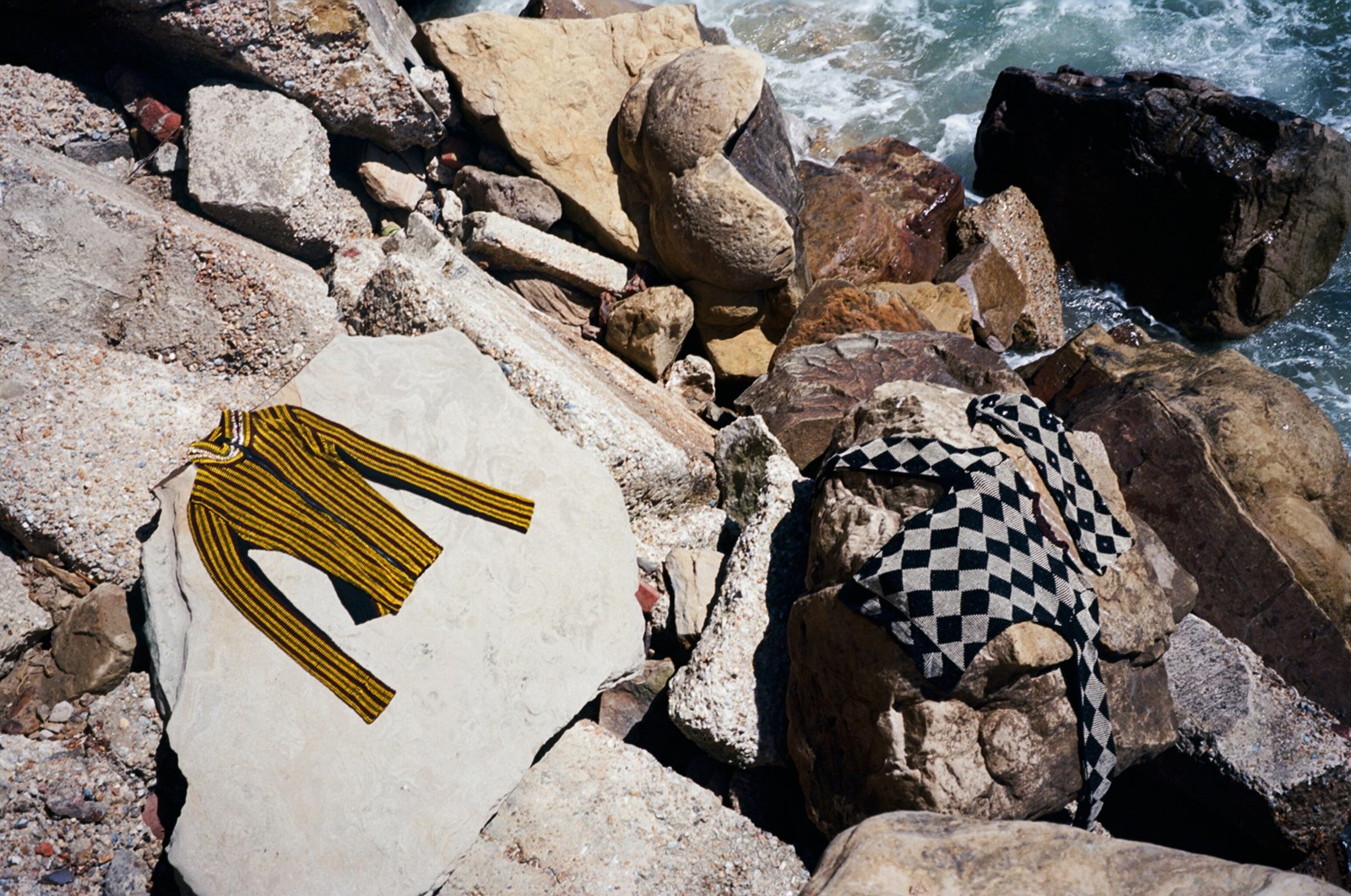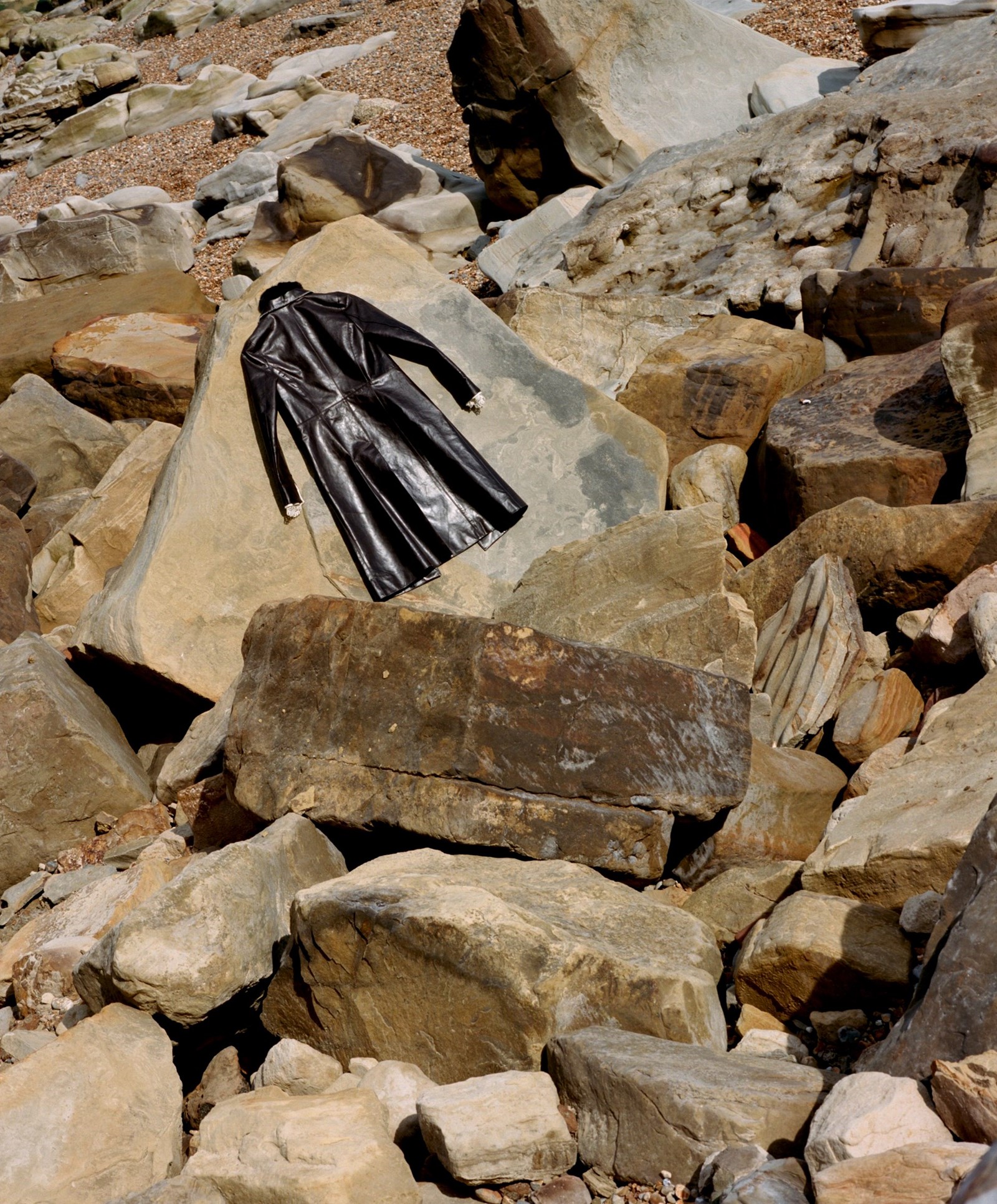“Wales Bonner is about more than an individual perspective, it’s about multiple perspectives,” says London designer Grace Wales Bonner who, since graduating from Central Saint Martins’ BA Fashion course little over three years ago, has captured the industry’s attention with her exquisite take on men’s apparel, narrative-filled collections and delicate exploration of black culture. Given her singular vision, it may come as a surprise to hear that Wales Bonner adopts such a collaborative approach in her work – but it has become part and parcel of her practice. “I look for people who challenge me,” she continues. “I’m always interested in working with people that I feel are more experienced or knowledgeable than me. It helps me to step up my game.”
A prime example of this is her A/W17 show, staged at London Fashion Week Men’s in January, which saw her partner with south London soul-pop songster Sampha and audio alchemist Elysia Crampton on the music, and painter and writer Lynette Yiadom-Boakye, who wrote a poem inspired by her A/W17 “street creature” muse, to further define her character. And that’s before you get to the clothes – she also worked with Stephen Jones on the millinery, and Manolo Blahnik on the footwear. These pairings add an extra layer of artistry to a show already laden with craftsmanship and narrative.

This show also saw Wales Bonner collaborate with Serena Gili – a French knitwear designer and Central Saint Martins graduate. Centred around an elevated notion of “the street”, this collection was based around four characters: the rocker, the street preacher, the 90s intellectual and the Renaissance “effeminate son”, the latter of which the designer worked on with Gili.
Painstakingly created by hand, these garments included a glittering do-rag embroidered with Swarovski crystals and enamel beads; two beaded bags knitted from silk yarn decorated with very thin silver beads and a similar skirt knitted from cashmere yarn. Their collaboration also included several tops which, through the use of more beading, bear black and white harlequin and black and yellow vichy patterns.


“When Grace contacted me it was perfect timing,” Gili recalls, “because I had all these elements which were very easy to translate into her language. My BA collection was a mix of 16th-century Elizabethan costume and a tribal feeling, and my MA had a punk, S&M feeling, mixed with the Herero tribe from Southern Africa. I feel like Grace and I always had this kind of mix of cultures in our work.”

Wales Bonner saw both collections and was instantly taken by Gili’s attention to craft, which is something she herself is passionate about. And while the duo are clearly kindred spirits in some ways, they differ in others, which was part of the reason Wales Bonner enjoyed working with Gili so much. “It was quite interesting working with Serena because her process is like so different to mine,” she says. “It’s so intricate and time-consuming a process. It was amazing to see that level of craft and that artisanal way of working.” These laboriously created collaborative pieces are defiantly non-commercial, and will not be part of the Wales Bonner collection which goes on sale in-store this month. But in a collection as nuanced and deeply rooted in collaboration as this, the saleability scarcely seems to matter.
